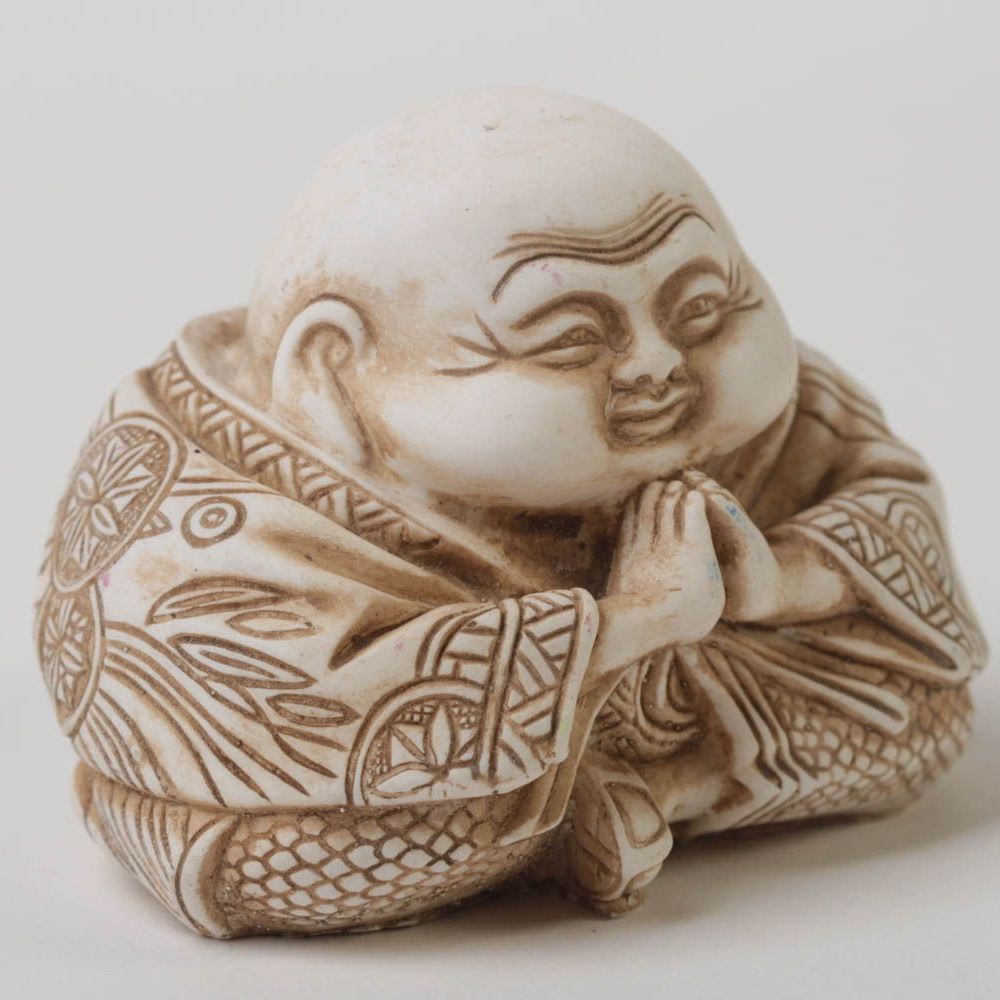
Popular Japanese figurines - netsuke and okimono are in demand in all countries of the world. You can make such figurines on CNC machines with the help of our models.
In this article we will tell in a little more detail what these figurines are, how they differ, what is the reason for their popularity, what plots and characters are most often depicted.
And be sure to add a link to our section with 3d models, where you can choose ready-made stl files in Japanese style. In addition, you can always contact us for custom model development.
What is okimono?
Okimono are ancient carved figures, statuettes, literally translated as "a thing to put on display". Hence, their main purpose is interior decoration.
Statuettes, small sculptures, carved figures - all these are called okimono. In Japanese dwellings, they were most often placed in tokonoma - in special niches in the wall, which are an indispensable element of the traditional aristocratic house. They became widespread mainly in the 16th century. Just at that time, special niches in houses became fashionable and began to be arranged everywhere.
Initially, they were figures of Buddha or Daruma - a Japanese doll-jewelry, depicting a Japanese deity.
Later the subjects began to expand and these figures depicted various saints and monks, animals - symbols of the year, Japanese deities. Such figurines were brought with them as souvenirs, given to each other or bought for interior decoration.
In the 17th century at an exhibition in Vienna, Japanese figurines of okimono, made of ivory, attracted many Western buyers and became a collector's item. A little later, due to the popularity of carved Japanese figurines in the West, figurines began to depict more often old men and children, fishermen, Japanese women and children, historical persons of Japan, musicians and actors, animals and sea creatures. The so-called Japanese realism in art was formed.
Most often okimono were made of wood, ivory, metals (bronze and silver). The most expensive figures were inlaid with mother-of-pearl and coral.
It is interesting that the largest collections of okimono are kept not in the historical homeland, but in Western countries. There are also reports that Russian writer Maxim Gorky collected such Japanese figurines.
Netsuke:
Netsuke are very similar to the okimono, but slightly different. These figurines are another indispensable attribute of Japanese fashion. And they are no less highly prized by collectors.
However, netsuke, unlike okimono, is not just a figurine for the interior. In the 16th century it was an important part of men's costume in Japan. That's why netsuke have special holes for a shoelace. And also do not have sharp edges that can damage the kimono. The figures are predominantly rounded and smoothed. Otherwise - provides complete freedom of creativity for master carvers and makers.
Netske had not only purely applied value, although they served as a kind of trinket, helping to carry on the belt all sorts of necessary things, such as weapons. But over time they became more like amulets, talismans. They were endowed with magical properties.
There were several kinds of such figurines:
- Katobori - these are netsuke that depicted animals or people, this is the most common variant of netsuke,
- Sashi - are a kind of bar, often used to carry a bunch of keys,
- Itaraku - two intertwined figures of deities, animals or people, made of reeds,
- Mandkyu - figurines with hieroglyphics depicting characters from Japanese mythology, made exclusively of ivory.
And others.
Some netsuke carried a special meaning. For example, Darun was a sage who was supposed to give his master wisdom. Daikoku - a sculpture in the form of an old man with a huge belly and a large bag on his back, it was supposed to bring wealth and happiness and was placed in the most prominent place in the living room. Ebisu - an old man with a fish, attracted to the house of happiness. And in combination with Daikoku was supposed to bring profit in business and prosperity for the whole family. There were many other figurines depicting ancient deities, philosophers (for example, Confucius, Lao Tzu).
The figurine of a child was supposed to give couples the birth of healthy and happy, obedient babies.
Netske with a whale - became a talisman for seafarers. Dog, especially if it is two dogs helped people to establish relationships, to ensure harmony and peace in the family. Netske with a monkey protected from otherworldly forces. Turtles symbolized longevity.
And the strongest amulet was considered a dragon, protecting the owner in all his affairs. Another important character is Karasisyu-Fo (it is a flying lion, a mythical creature close to Buddha, protecting from any troubles).
Most often netsuke were made of natural materials - wood or ivory.
Manufacturing in our time:
Today it is possible to make netsuke and other Japanese figurines on CNC machines. Quickly and qualitatively. In any quantity.
All you need for the machine is a suitable 3d model.
You can buy models from us in the section: Japanese and Chinese statuettes.
Or order individual production of your photos, sketches, descriptions. And we will prepare a model in stl format in the shortest possible time.
You may be interested in other articles on the site:
- Statuettes of animals: meaning. Models.
- Toys and souvenirs on CNC and 3d printers. Models
- Statuettes on CNC: meaning, features, models











